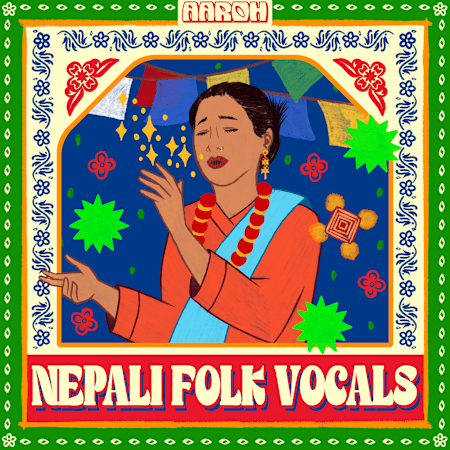/me14opkwlxywjucce3dc)
Nepali folk vocals carry a deep cultural legacy, weaving intricate melodies with microtonal shifts and expressive slides. These unique vocal qualities offer a rich, organic texture that can seamlessly blend into modern genres like electronic, hip-hop, and ambient music. In this guide, we’ll explore techniques to preserve the authenticity of these vocals while enhancing them with contemporary production tools—allowing you to create fresh, innovative soundscapes while honoring tradition.
1. Understanding Microtonal Phrasing and Vocal Slides
Nepali folk vocals often feature microtonal inflections — subtle pitch shifts between the standard notes found in Western music scales. These slides and bends are crucial to the emotional depth of the performance.
- Listen deeply: Spend time absorbing traditional recordings to internalize the phrasing.
- Tuning flexibility: Avoid over-tuning vocals to a rigid key — embrace the bends and ornamentations.
- Pitch correction with care: If needed, use a tool like Melodyne or Auto-Tune’s Flex-Tune mode to preserve microtonal nuances.
2. Enhancing Vocals with Reverb and Delay
To maintain the raw character of the vocals while placing them in a modern context, the right effects are essential.
- Pre-delay on reverb: Creates space around the vocal without muddying the initial transients.
- Plate or hall reverb: Plate works well for a warmer, classic sound, while hall gives an ethereal, expansive feel.
- Tape delay or slapback: Adds rhythmic movement without overpowering the organic quality.
- EQ after effects: A gentle high-pass filter (e.g., 150 Hz) keeps the reverb from getting too boomy.
3. Pairing Folk Vocals with Modern Instrumentation
Nepali folk vocals can sit beautifully within a variety of genres — from electronic and hip-hop to ambient.
- Electronic beats: Combine vocals with sparse drum patterns and atmospheric pads for a chilled, modern vibe.
- Hip-hop productions: Layer the vocal over a lo-fi or boom-bap beat, letting the melody weave through the rhythm.
- Ambient soundscapes: Use reversed vocal cuts, drones, and evolving synths to create a meditative, cinematic sound.
4. Layering with Traditional South Asian Instruments
To preserve the cultural feel, consider blending vocals with traditional instruments like the sarangi, bansuri (flute), or madal (hand drum).
- Complementary melodies: Let instruments echo or respond to the vocal phrases.
- Textural fills: Use instruments as swells, stabs, or harmonic pads underneath the vocal.
- Panning for space: Spread instruments across the stereo field to avoid a crowded center.
/wazmw9fn1049xj1vmxdi)
Photo by nk Spreader
By understanding the phrasing, enhancing with the right effects, and pairing thoughtfully with both modern and traditional elements, you can create something truly unique and respectful of Nepali folk vocals’ rich heritage.
Happy producing — and may your tracks resonate with timeless warmth and modern fire! 🔥
Explore More: Nepali Folk Vocals Sample Pack
If you’re inspired to dive deeper, check out Aaroh - Nepali Folk Vocals — a sample pack featuring the celebrated musician Jhuma Limbu and produced by Abhisek Bhadra.
Recorded in Kathmandu, this pack showcases an array of acapella and processed vocal sounds, highlighting the diverse ethnic traditions of Nepal.
Jhuma Limbu, a renowned artist with over 20 years in the Nepali music scene, brings her passion for preserving and exploring Nepali folk genres to life. Complementing her artistry is Abhisek Bhadra, an accomplished musician and producer with a background in jazz and contemporary music education, who led the production of this collection.
Whether you’re crafting an ambient soundscape or layering vocals into a modern beat, this pack offers an authentic gateway into Nepal’s vibrant vocal heritage — ready to infuse your productions with a truly unique, cultural essence.


